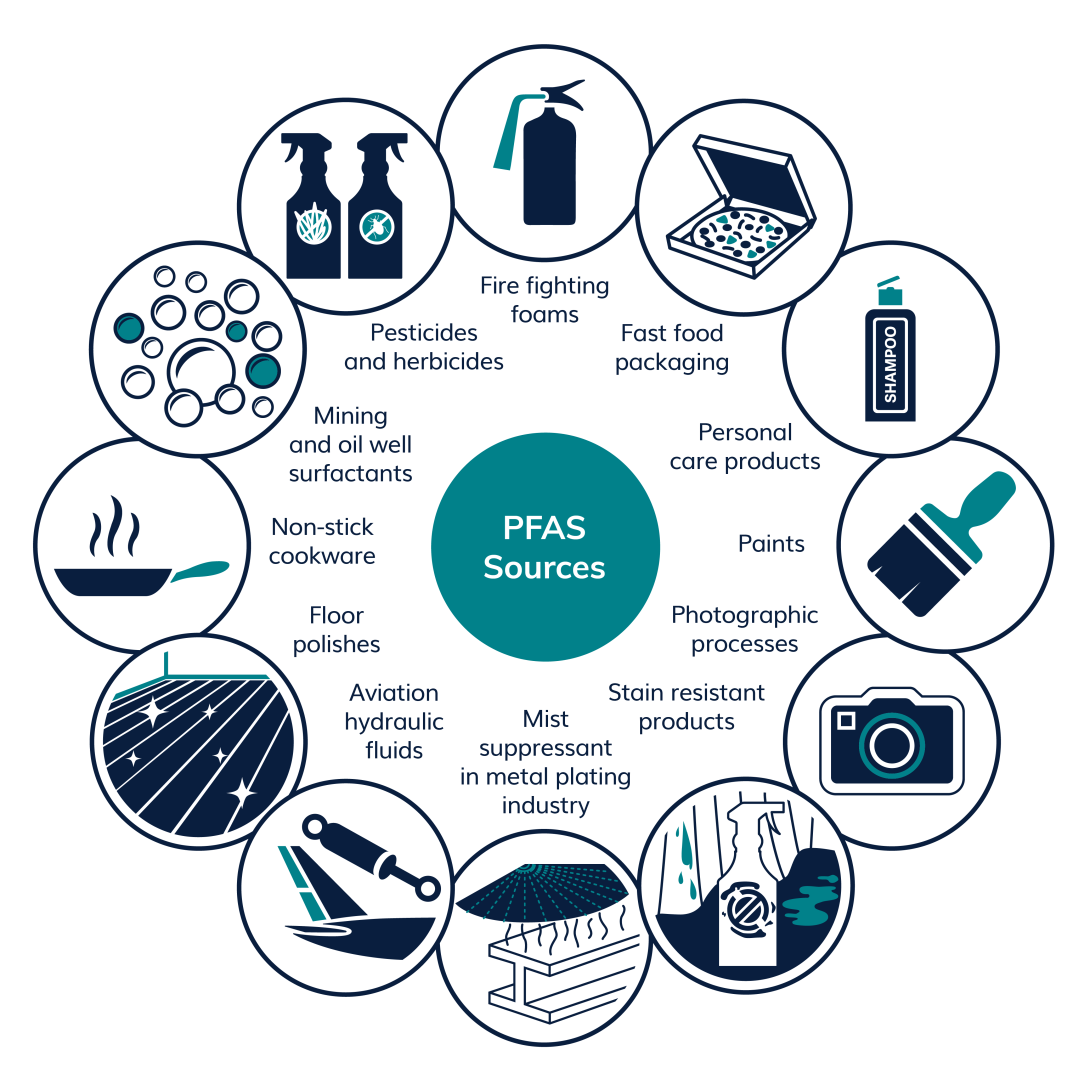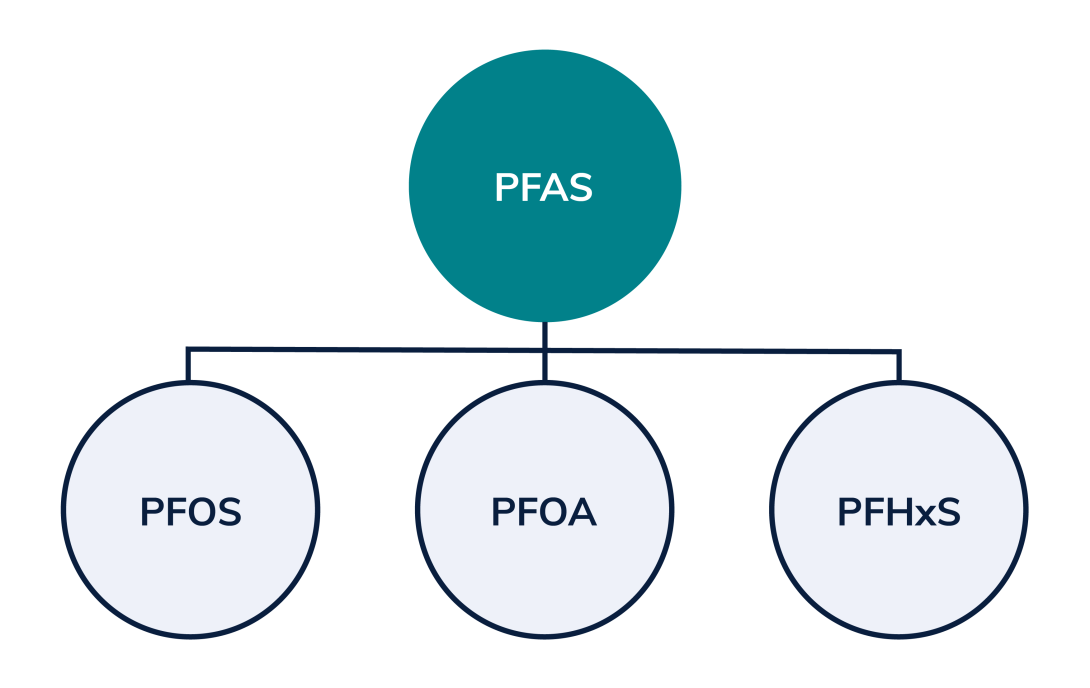- What are PFAS?
- What is the aim of the PFAS Airports Investigation Program?
- How will the Program be run?
- Who is delivering the Program?
- Why is the Program only investigating airports?
- How long will the investigations take?
- Which other agencies are involved in PFAS investigations?
- How does the Program relate to other Commonwealth PFAS investigations?
- Will the department undertake remediation of PFAS contamination if found during the Program?
- Are PFAS-containing foams still being used in firefighting activities at airports?
- Further information
What are PFAS?
PFAS stands for Per- and Polyfluoroalkyl substances. These substances are manufactured chemicals that have been used since the 1950s to make products that resist heat, oil, stains and water.
Due to their effectiveness in fighting liquid fuel fires, firefighting foams containing perfluorooctane sulfonate (PFOS) and perflurorooctanoic acid (PFOA) as active ingredients were once used extensively worldwide and within Australia, including at civilian airports. Perfluorohexane sulfonate (PFHxS) is also commonly found in legacy firefighting foams as an impurity in the manufacturing process.
PFOS, PFOA and PFHxS belong to the PFAS group of chemicals.
PFAS have also been used in Australia and around the world in many common household products and specialty applications. As a result, most people living in developed nations have a detectable level of PFAS in their blood. The release of PFAS into the environment is a concern, because these chemicals are highly persistent, have been shown to be toxic to some animals, and can accumulate in the bodies of animals and people who come into contact with them. However currently there is limited evidence that exposure to PFAS causes adverse human health effects.
In 2003 Airservices Australia, the government's air navigation service provider, commenced phasing out its use of legacy firefighting foam containing PFOS and PFOA as active ingredients and transitioned to a more environmentally safe product. In 2010 it ceased using fluorine containing foams and switched to fluorine free foam.


What is the aim of the PFAS Airports Investigation Program?
The Program aims to identify the nature and extent of PFAS contamination at airports through independently audited whole-of-site testing, and to develop robust management plans to address any identified risks.
How will the Program be run?
Airports are complex industrial sites, which vary in size, scale, ownership and environmental context, as well as the nature and scale of potential PFAS impacts. Through the PFAS Airports Investigation Program (the Program), the department will work with airports and other stakeholders to ensure whole-of-site PFAS impacts are properly characterised and, nationally consistent PFAS Management Plans are put in place. This will provide confidence to communities, businesses and industry that the environmental and human health risks associated with PFAS contamination are being effectively monitored and managed.
In many cases, airports and/or their tenants have commenced or already completed PFAS investigations. The department will work collaboratively with airports, contaminated land specialists and independently accredited auditors to assess previous and concurrent works and, undertake investigations which ensure a whole-of-site understanding of PFAS. Information from these investigations will be used to support the development of risk‑based PFAS Management Plans for each site.
All investigations carried out under the Program are undertaken in accordance with national guidance, as set out in the following documents:
- The National Environment Protection (Assessment of Site Contamination) Measure 1999 as updated in 2013 (ASC NEPM).
- The PFAS National Environmental Management Plan (PFAS NEMP).
- The Intergovernmental Agreement on a National Framework for Responding to PFAS Contamination.
You can read more about the ASC NEPM on the National Environment Protection Council website, and the Intergovernmental Agreement and PFAS NEMP on the Australian PFAS Information Portal.
The investigation process is outlined below.
| Preliminary Site Investigation (PSI)—first investigation stage | Detailed Site Investigation (DSI)—second investigation stage | Human Health and Ecological Risk Assessment (HHERA)—final investigation stage | Ongoing Monitoring—Management stage |
|---|---|---|---|
|
Image

A PSI includes a desktop historical review, site inspections and may include limited sampling to determine the potential for PFAS contamination. |
Image

A DSI includes sampling and analysis to identify the source and location of PFAS and if and where it has moved to. Depending on the outcome, there may be a human health and/or ecological risk assessment. |
Image

If the site evaluation identifies any contamination and possible exposure for people, plants or animals to PFAS levels above relevant guidelines, a HHERA will be undertaken. Findings from a HHERA are used to inform the development of a PFAS Management Plan. |
Image

The PFAS Airports Investigation Program will use the findings of the investigations to support airports in developing a tailored management plan for the best approach to monitor and manage contamination at affected sites to address any identified risks. |
Who is delivering the Program?
The Department of Infrastructure, Transport, Regional Development, Communications and the Arts (the department) administers the Program. The department has engaged expert contaminated land consultants to conduct site investigation works, and accredited contamination site auditors to provide independent technical oversight on behalf of the department.
Why is the Program only investigating airports?
The Program is designed to understand PFAS impacts in the context of airports where the Commonwealth has historically provided firefighting services which used PFAS-containing foams.
How long will the investigations take?
The duration of investigations will depend on the nature and scale of contamination and the size and complexities of the airport site and surrounds. PFAS investigations at each airport are anticipated to take two to three years on average to complete.
Which other agencies are involved in PFAS investigations?
All works undertaken as part of the Program are subject to independent technical oversight by accredited contamination site auditors and key documents are developed in consultation with relevant Commonwealth, State and Territory environmental agencies.
How does the Program relate to other Commonwealth PFAS investigations?
There are other PFAS investigations being conducted by Commonwealth agencies at airports around the country. The Department of Defence is investigating PFAS impacts at Defence sites, while Airservices Australia's National PFAS Management Program is investigating PFAS impacts in targeted areas at airports where it provides aviation rescue and firefighting services. The department is working with both the Department of Defence and Airservices Australia to share information and avoid duplication. For further information, please visit the Australian PFAS Information Portal.
Will the department undertake remediation of PFAS contamination if found during the Program?
The Program is currently funded as an investigation program. As part of the Program, PFAS Management Plans will be developed, in collaboration with airports, that will outline a reasonable and practicable approach to the management and monitoring of PFAS-related risks.
Are PFAS-containing foams still being used in firefighting activities at airports?
Firefighting foams containing PFAS have been used in fire training drills and emergencies by the public and private sectors in Australia and worldwide for decades.
The Australian Government has worked since 2002 to reduce the use of certain PFAS. As far as we know at this point in time, the biggest source of PFAS contamination in Australia is from historical use of PFAS-containing firefighting foams, particularly at firefighting training grounds. Use of these firefighting foams has been significantly reduced and discontinued in most cases. For further information, please visit the Australian PFAS Information Portal.
Further information
For enquiries, you can contact the department directly at: PFAS@infrastructure.gov.au.
To find out more about PFAS and the Australian Government's approach, please visit the Australian PFAS Information Portal.
For all health-related information, please refer to the Department of Health and the Environmental Health Standing Committee (enHealth) or your local State or Territory health department.